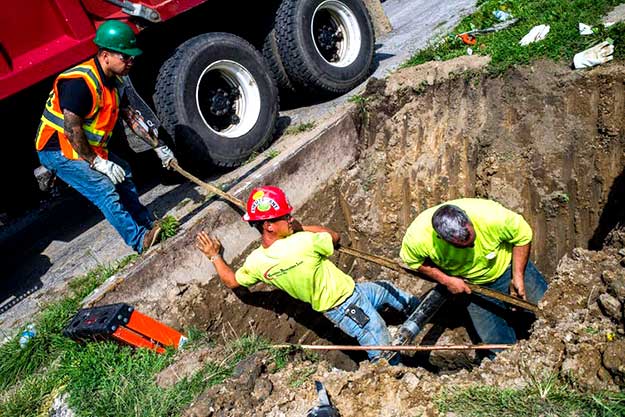We worked behind the scenes with dozens of journalists on “Tainted Water,” a year-long investigation into lead-contaminated drinking water in Canada. We were shocked by the results.
The journalists, co-ordinated by Concordia University’s Institute for Investigative Journalism, retrieved the results of municipal lead tests from 14 Canadian cities via Freedom of Information Act requests. They also collected water samples by knocking on doors and interviewed people who assumed their water was safe.
As the results poured in, any illusions we had about widespread compliance with lead safety standards for drinking water quickly evaporated.
The problem with old plumbing
One-third of water samples, most of them taken from older homes suspected to have lead service lines, exceeded Health Canada’s new guidance of five parts per billion (ppb); 18 per cent exceeded 15 ppb. Five cities — Montréal, Regina, Saskatoon, Prince Rupert, B.C. and Moose Jaw, Sask. — had levels of lead in their water that were comparable with Flint, Mich., during its peak period of water contamination.

Crews work to replace lead-tainted pipes in Flint, Mich. in 2016. (Jake May/The Flint Journal-MLive.com via AP)
In Ontario, the only province that required schools to test their water, more than 2,400 schools and daycare centres exceeded the federal guideline.
These results confirm what studies have found over the past 10 years; lead-tainted water is, too often, present in our daycares and schools, in our workplaces and homes.
Drinking water that contains five parts per billion of lead — the equivalent to five tablespoons of lead in an Olympic-sized swimming pool — increases the amount of lead circulating in our blood by 20 to 30 per cent; lead in water is the primary source for infants who drink formula made with tap water.
The news wasn’t all bad. Some cities, like Toronto and Ottawa, already use chemicals to reduce leaching of lead from water pipes and, predictably, the amount of lead in drinking water plummeted. Corrosion control also reduces damage to drinking water pipes. Several cities have already begun to replace lead service lines.
Health impacts of lead
The amount of lead found in our blood today is much lower than levels found five decades ago. Yet the amount of lead in our bodies, which is mostly stored in our bones, is 10- to 100-times higher than levels found in our pre-industrial ancestors. On an evolutionary timescale, we are still heavily lead-exposed.
Scientists have found that lead — a metal so toxic that the World Health Organization said, “there is no safe level” — elevates the risk for various health problems. A pregnant woman who has too much lead in her blood is more likely to deliver her baby preterm. Minute amounts of lead diminishes a child’s ability to learn. An uptick in a man’s lead exposure reduces his fertility.
Along with air pollution and smoking, lead irritates the interior lining of blood vessels that feed the heart, causing plaque build-up and elevating the risk of a heart attack in middle-aged and older people.
A national strategy for safe water by 2030
Health Canada’s new guideline for unsafe amounts of lead in water — five ppb — is among the strongest in the world, but it is useless unless we test the tap water using a standardized protocol mimicking how people drink the water, and then act decisively on the results.
In 2017, Parliament’s Committee on Environment and Sustainability reviewed the Canadian Environmental Protection Act and recommended expanding rights for transparency and public participation in decision-making about toxic chemicals, like lead. The committee also recommended legally binding and enforceable national standards for drinking water. We agree.
Canadians should not have to rely on investigative reporters to force release of lead tests done by public health agencies or to show that drinking water in some Canadian cities is worse than in Flint, Mich. Likewise, utilities and not reporters should be telling consumers how to best protect themselves from water lead using remedial flushing, lead filters and bottled water.
We call on the federal government to establish a national commission and develop a strategy to achieve safe water for all Canadians by 2030. The lack of safe drinking water in our cities — and in many First Nations communities — is a threat to public health and will create a public crisis of confidence.
It won’t be easy to fix the aging system of pipes transporting water to our taps, but Canadians should be able to trust that the water we drink is safe.
Source: https://theconversation.com/
Dear User/Visitor! Please, answer on our questions: tick off one of the positions – your answer will make us able to improve our site and make it more interesting and useful!


